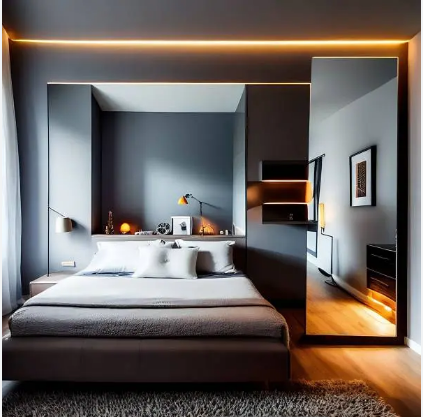Interior design is an art form that allows us to transform spaces into visually appealing and functional environments. Over the years, various design styles have emerged, each with its unique characteristics and influences. One such style that has gained significant popularity is minimalism. In this article, we delve into the essence of minimalism in interior design and explore how it creates serene and harmonious living spaces.
Understanding Minimalism:
Minimalism is a design philosophy that embraces simplicity, clean lines, and a focus on functionality. It strives to remove excess and clutter, allowing the essence of a space to shine through. Minimalist interiors often feature neutral color palettes, ample natural light, and an emphasis on essential elements.
The Beauty of Simplicity:
At the heart of minimalism lies the concept of simplicity. By decluttering spaces and eliminating unnecessary ornamentation, minimalism allows the true beauty of each element to be appreciated. Clean lines and uncluttered surfaces create a sense of calmness and tranquility, providing a visually soothing experience.
Functional Spaces:
Minimalism champions the idea that form should follow function. Each element within a minimalist space is carefully chosen for its purpose and practicality. Furniture and decor items serve a specific function while maintaining an aesthetic appeal. This approach not only enhances the visual appeal of the space but also promotes efficiency and organization.
Embracing Natural Light:
Light plays a crucial role in minimalism. Open and airy spaces are preferred, and natural light is welcomed as it brings a sense of warmth and serenity. Large windows, skylights, and light-colored walls are often employed to maximize the entry of natural light. This integration with nature helps create a connection between the interior and exterior environment, enhancing the overall sense of harmony.
Neutral Color Palettes:
Minimalist interiors predominantly feature neutral color palettes, such as whites, grays, and earth tones. These hues provide a timeless and sophisticated backdrop that allows the other elements in the space to stand out. By using a restrained color scheme, minimalist design fosters a sense of visual balance and order.
Furniture and Accessories:
In minimalist design, furniture and accessories are carefully selected to complement the overall aesthetic while maintaining functionality. Furniture pieces often have clean and simple lines, with an emphasis on geometric shapes. Quality materials, such as natural woods and metals, are favored, adding warmth and texture to the space. Decorative accessories are used sparingly, with each item serving a specific purpose and contributing to the overall design intent.
Creating a Sense of Serenity:
Minimalist interiors promote a sense of calm and serenity. By eliminating excess and focusing on the essentials, these spaces provide an escape from the chaos of the outside world. The simplicity and orderliness of minimalism encourage mindfulness and tranquility, allowing individuals to unwind and rejuvenate within their own homes.
Conclusion:
Minimalism in interior design offers a refreshing and harmonious approach to creating living spaces. By embracing simplicity, functionality, and a restrained color palette, minimalist interiors provide a serene backdrop for modern living. Whether it's a cozy bedroom, a minimalist kitchen, or an open living area, the beauty of minimalism lies in its ability to transform spaces into tranquil sanctuaries, allowing individuals to find solace in the simplicity of their surroundings.
Click Here To View More Info- https://www.minimalism.one/


